Student author: @dadayu34
Guidance teacher: @CryptoScott_ETH
Initial release date: 2024.4.26

- The development and progress of LLM large models and AI are a great technological advancement in human history. Humanity has entered the AI era, where "computing power" is the scarcest resource in this new world.
- The trend of computing power development is edge computing, which can effectively reduce physical latency and become the cornerstone of industries with low-latency demands such as the metaverse. Decentralized distributed cloud computing has the advantages of flexibility, low cost, and resistance to censorship, with a very broad development prospect.
- Aethir is a decentralized real-time rendering platform based on the Arbitrum network, providing enterprise-level computing power services for games, artificial intelligence, and other enterprises by aggregating high computing power GPUs such as H100.
- Aethir has cooperated with top cloud computing projects in the industry such as io.net, Theta, as well as multiple top game studios and telecommunications companies. It is expected that the annual recurring revenue (ARR) for the first quarter of 2024 will exceed 20 million US dollars.
- Aethir Edge significantly reduces the threshold for ordinary users to sell excess computing power and greatly expands the geographical coverage of the Aethir network.
- Aethir has raised 80 million US dollars through the sale of checker node NFTs, proving the project's prospects and economic model to be highly attractive to a wide range of users.
- The hourly usage cost of A100 in the Aethir network is significantly lower than that of other competitors, giving it a clear competitive advantage.

The change in the development process of human society is often achieved through several great scientific inventions and advancements. Each breakthrough in technology directly creates a more efficient and prosperous new era.
The industrial revolution, the electrical revolution, and the information revolution are great technological advancements in human history. They have completely changed the face of human society, bringing unprecedented changes in productivity and lifestyle. Now, we can no longer return to the era of oil lamps for lighting and horse-drawn carriages for delivering letters. With the birth of GPT, humanity has entered another great new era.
LLM is gradually liberating human intelligence, allowing people to use their limited energy and intelligence for more creative thinking and practice, leading people into a more efficient world.
We see GPT as another world-changing technological breakthrough, not only because of the huge progress in natural language understanding and generation, but also because humanity has discovered the law of exponential growth in the capabilities of large language models—by continuously expanding model parameters and training data, the capabilities of LLM models can be exponentially improved. In the presence of sufficient computing power, there is currently no visible bottleneck in this process.
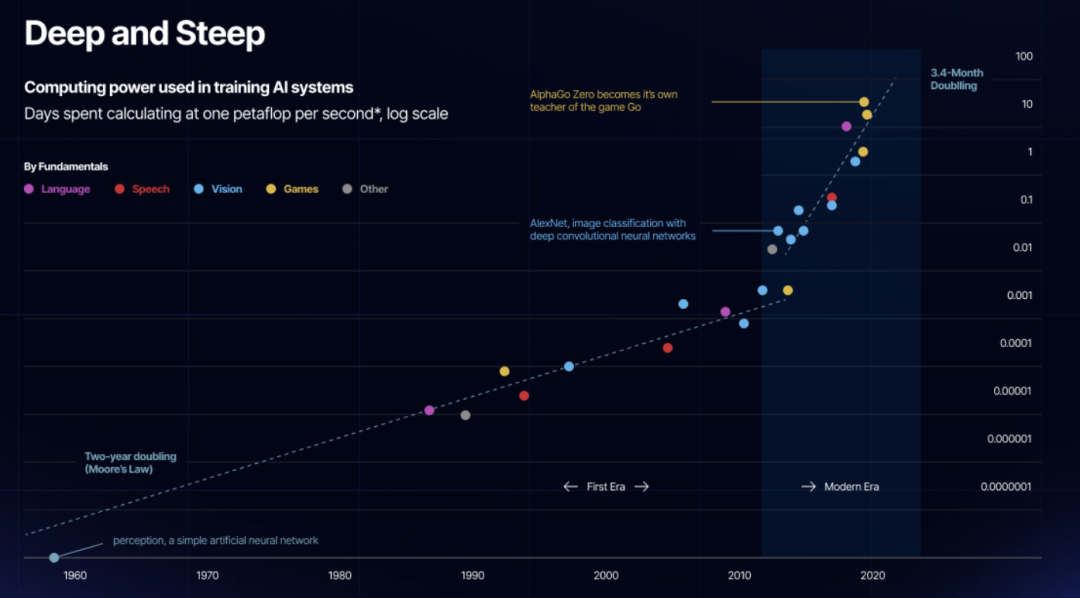
source: https://arxiv.org/pdf/2202.05924.pdf, https://developers.io.net/docs/how-we-started
The use of large language models is not limited to understanding human language and conversation; on the contrary, this is just the beginning. Once machines have the ability to understand language, it is like opening a Pandora's box, releasing unlimited imaginative space. People can use the ability of AI to develop various disruptive functions.
Currently, in various interdisciplinary technological fields, LLM models have been deployed. From the humanities fields such as video production, artistic creation, to hard technology fields such as drug development, biotechnology, they will inevitably undergo earth-shaking changes.
In this era, computing power is seen as a scarce resource. Large tech giants have abundant resources, while emerging developers face barriers to entry due to insufficient computing resources. In the AI new era, computing power is power, and those who control computing power have the ability to change the world. GPUs, as the cornerstone of deep learning and scientific computing, play a crucial role in this.
In the rapidly developing field of artificial intelligence (AI), we must recognize the dual aspects of development: model training and inference. Inference involves the function and output of AI models, while training includes the complex process of building intelligent models, including machine learning algorithms, datasets, and computing power.
Taking GPT-4 as an example, to obtain high-quality inference, developers need comprehensive basic datasets and huge computing power to train effective AI models. These resources are mainly concentrated in the hands of industry giants such as NVIDIA, Google, Microsoft, and AWS.
The high cost of computing and entry barriers prevent more developers from entering, and also perpetuate the dominance of the top players. They have large basic datasets and a large amount of computing power, with the ability to continuously increase their scale and reduce their costs, making the industry barriers more solid.
But we cannot help but consider whether there is a solution to reduce computing costs and industry entry barriers through the adoption of blockchain technology. The answer is yes. Decentralized distributed cloud computing provides us with such a solution in this era.


Despite the current expensive and scarce computing power, GPUs are not fully utilized. This is mainly because there has not been a ready-made way to integrate these scattered computing powers and operate them in a commercial manner. The following are typical GPU utilization figures for different workloads:
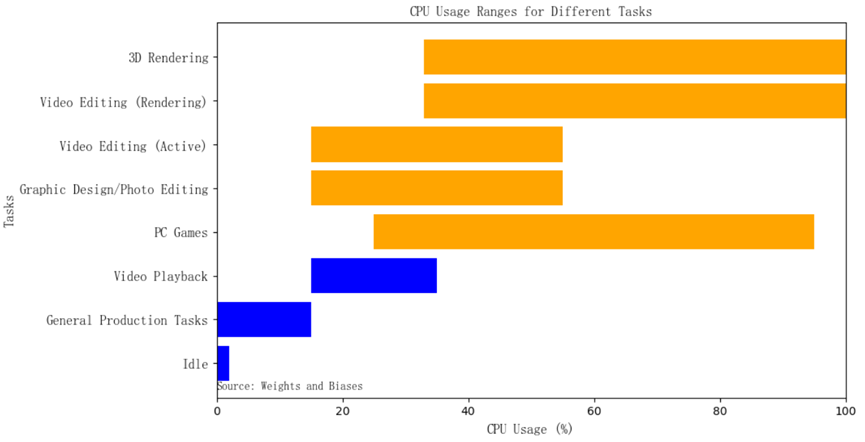
Most consumer devices with GPUs belong to the first three categories, namely idle (just started entering the Windows operating system):
- GPU utilization: 0-2%;
- General production tasks (writing, simple browsing): 0-15%;
- Video playback: 15-35%.
The above data indicates extremely low utilization of computing resources, and in the Web2 world, there are no effective measures to collect and integrate these resources. However, Crypto and the blockchain economy may be the perfect solution to this challenge. The encrypted economy has constructed an extremely efficient global market, and due to the unique token economy and the characteristics of a decentralized system, the pricing, circulation, and matching of market supply and demand for resources are highly efficient.

The development of AI is shaping the future of humanity, and the progress of computing power determines the development of AI. Since the invention of the first computer in the 1940s, the computing mode has undergone multiple transformations. From bulky mainframe computers to lightweight laptops, and from purchasing centralized servers to leasing computing power, the barriers to obtaining computing power have been gradually reduced. Before the emergence of cloud computing, enterprises had to purchase their own servers and constantly upgrade them with technological innovations. However, the emergence of cloud computing has completely changed this model.
The basic concept of cloud computing is that the demand side leases servers, accesses them remotely, and pays based on usage. Now, traditional enterprises are being disrupted by cloud computing. In the field of cloud computing, virtualization technology is at the core. Virtualized servers can partition a powerful server into smaller ones for rental and can dynamically allocate various resources.
This model has completely changed the commercial landscape of the computing power industry. Previously, people needed to purchase computing facilities to meet their computing needs, but now they only need to pay rent on a website to enjoy high-quality computing power services. The future development direction of cloud computing is edge computing. Due to the distance of traditional centralized systems from users, there is a certain degree of latency. Although latency can be optimized, it can never be completely overcome due to the limitation of the speed of light.
However, emerging industries such as the metaverse, autonomous driving, and remote healthcare have extremely low latency requirements, so cloud computing servers need to be moved closer to users. As a result, more and more small data centers are being deployed around users, which is edge computing.

Compared to centralized cloud computing providers, the advantages of decentralized cloud computing mainly include:
- Accessibility and Flexibility: Access to computing chips from cloud service providers such as AWS, GCP, or Azure usually takes several weeks, and high-performance GPU models such as A100 and H100 are often out of stock. In addition, to obtain computing power, consumers often need to sign long-term, inflexible contracts with these large companies, resulting in not only a loss of time but also making business operations rigid and less flexible. In contrast, distributed computing platforms can provide computing power at any time and offer flexible hardware choices, making them more accessible.
- Lower Cost: By utilizing idle chips and adding token subsidies from network protocol parties to chip and computing power providers, distributed computing networks may be able to offer more affordable computing power.
- Resistance to Censorship: Systems like io.net and Aethir do not position themselves as permissionless systems. They have addressed compliance issues such as GDPR and HIPAA during GPU onboarding, data loading, data sharing, and result sharing phases.
With the further development of AI and the continued imbalance of GPU supply and demand, more developers will be driven to decentralized cloud computing platforms. Additionally, during a bull market, GPU suppliers will earn more profits due to the rise in cryptocurrency prices, which will stimulate more GPU providers to enter the market, creating a positive feedback loop.

Technical Challenges
1. Parallelization Challenge
Distributed computing platforms typically aggregate a long tail of chip supply, meaning that individual chip suppliers are almost unable to independently complete complex AI model training or inference tasks in a short period of time. To be competitive, cloud computing platforms must use parallelization to break down and allocate tasks to shorten the total completion time and increase the platform's computing power.
However, parallelization faces a series of issues, including how to decompose tasks (especially for complex deep learning tasks), data dependencies, and additional communication costs between devices.
2. Risk of New Technology Substitution
With a large amount of capital invested in ASIC (Application-Specific Integrated Circuit) research and new inventions such as Tensor Processing Units (TPU), there may be an impact on the GPU clusters of decentralized computing platforms. If these ASICs can provide good performance and have cost trade-offs, the GPU market currently monopolized by large AI organizations may return to the market. This will increase GPU supply and affect the ecosystem of decentralized cloud computing platforms.
3. Regulatory Risks
Since decentralized cloud computing systems operate in multiple jurisdictions and may be subject to different laws and regulations, there may be unique legal and regulatory challenges. Compliance requirements such as data protection and privacy laws may also be complex and challenging.
At present, the main users of cloud computing platforms are professional developers and institutions who prefer to use a platform for the long term and are not likely to change it arbitrarily. Whether to use a decentralized or centralized platform, price is just one consideration. These users place more emphasis on the stability of the service. Therefore, if a decentralized platform has strong integration capabilities and sufficient stable computing power, it is more likely to gain favor from these customers, leading to long-term partnerships and stable cash flow.
Next, I will introduce the new distributed computing project Aethir, which focuses on game rendering and AI in this cycle, and estimate its potential valuation after listing based on similar AI projects and distributed computing projects currently on the market.


Aethir Cloud is a decentralized real-time rendering platform based on the Arbitrum network, which helps game and AI companies deliver their products directly to consumers by aggregating and intelligently reallocating new and idle GPUs from enterprises, data centers, cryptocurrency mining businesses, and consumers.
One of the key innovations of the project is the resource pool, which aggregates dispersed computing power contributors under a unified interface to serve global customers. A notable feature of the resource pool is that GPU providers can freely connect or disconnect from the network, allowing enterprises or data centers with idle equipment to participate in the network during downtime, increasing the flexibility and device utilization of providers.
The operation of the Aethir ecosystem is based on three core infrastructures:
- Container: The key function of the container is to provide real-time remote rendering services, offering a "zero-latency" experience. The container is the actual location of cloud computing, acting as a virtual endpoint, executing and rendering applications. This transitions workloads from local devices to containers.
- Checker: Checker nodes ensure the integrity and service quality of the Aethir network by inspecting containers and their service processes. After completing tasks, the checker node signs the results with its private key and submits them to the referee. The referee receives 2N+1 results from each container, and each node providing results similar to the majority will receive token rewards.
- Indexer: As the core of the Aethir network, the indexer matches consumers with suitable containers to ensure the rapid launch of cloud applications and services. The goal is to provide "second-level" service—transitioning from the consumer's request to actual delivery in the shortest possible time. This requires concise signaling and efficient scheduling. To maintain decentralization and enhance user experience, indexers are randomly selected to reduce potential fraud risks and signal delays.
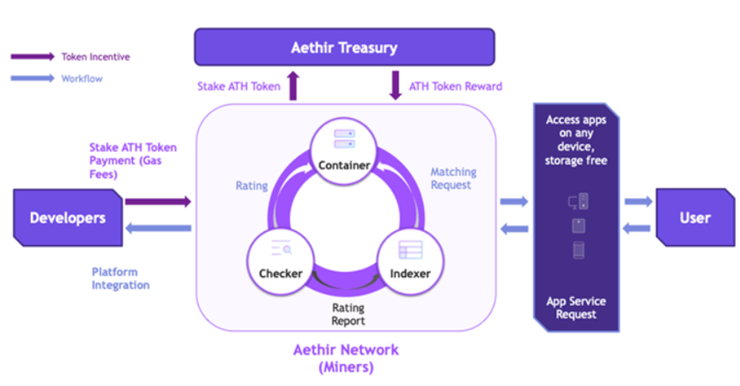

Aethir has a strong team and abundant resources, as reflected in its existing achievements:
- Aethir has reached a partnership agreement with the io.netT network, and the two ecosystems will be integrated to provide customers with a perfect GPU computing experience, including clusters and serverless inference services. Additionally, Aethir and the io.net community will conduct a $50 million airdrop exchange, with each community airdropping tokens worth $50 million to the other, to drive the development of the entire ecosystem.
- Aethir is collaborating with the first decentralized AI cloud edge computing platform, Theta EdgeCloud, to launch the world's largest hybrid GPU market.
- Aethir has signed a contract with WellLink, the largest cloud gaming company with over 64 million monthly active users, focusing on mixed reality metaverse and game development. It has also signed a contract with the world's largest game studio with 150 million monthly active users.
- It has signed a contract with the world's largest telecommunications company, with an annual recurring revenue of $5 million (potentially rising to $13.9 million in the near future).
- Aethir has partnered with Meta48 to become the exclusive GPU cloud computing service provider for its mixed reality products. Meta48 is a tech company focused on Web3.0 metaverse development, with its core product being a metaverse world combining extended reality (AR), virtual reality (VR), and mixed reality (MR) elements.
- An additional 10 contracts in the gaming sector are in the pipeline.
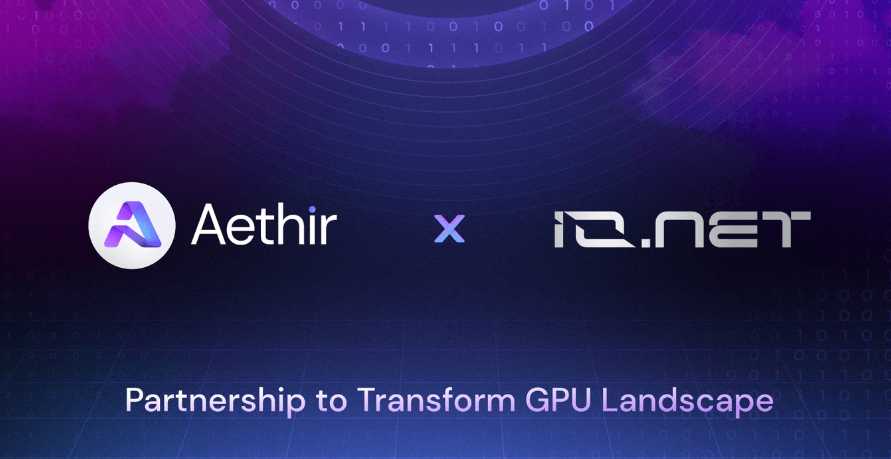
In the first quarter of 2024, Aethir's node sales revenue reached $80 million, setting a record for Depin project and AI project sales. Aethir has already validated the market demand for enterprise-level GPUaaS customers in AI model training, virtual computing, and the gaming sector, with three existing contracts expected to generate annual recurring revenue (ARR) of over $20 million in the first quarter of 2024. Since the project went live, revenue from service fees has reached $1.8 million.
In comparison, the entire DePin industry generated only $24 million in ARR last year, and these sales revenues not only far exceed those of other leading protocols in the industry but also demonstrate Aethir's extraordinary position in the industry, bringing it significant valuation potential. Its strong resources and abundant capabilities help it expand its scale, enhance its technical strength, and create a sustainable and self-reinforcing growth cycle.

Aethir Edge is the hardware device launched by the Aethir network to power the next generation of GPU cloud computing. The device uses advanced technology, including the Qualcomm® Snapdragon 865 chip and 12GB LPDDR5 memory, for edge processing of data-intensive workloads.
Aethir Edge has 256GB UFS 3.1 storage capacity for high-speed data access, as well as a 1000M GE LAN network port and WIFI6 2T2R + BT5.2 connectivity. This gives Aethir Edge enterprise-level computing capabilities.
It aggregates various idle GPU resources through the Aethir network over the internet and directly transfers them to end users, creating a model that aggregates idle computing resources, greatly increasing the supply and accessibility of computing power, and holding significant significance for the AI and gaming industries.
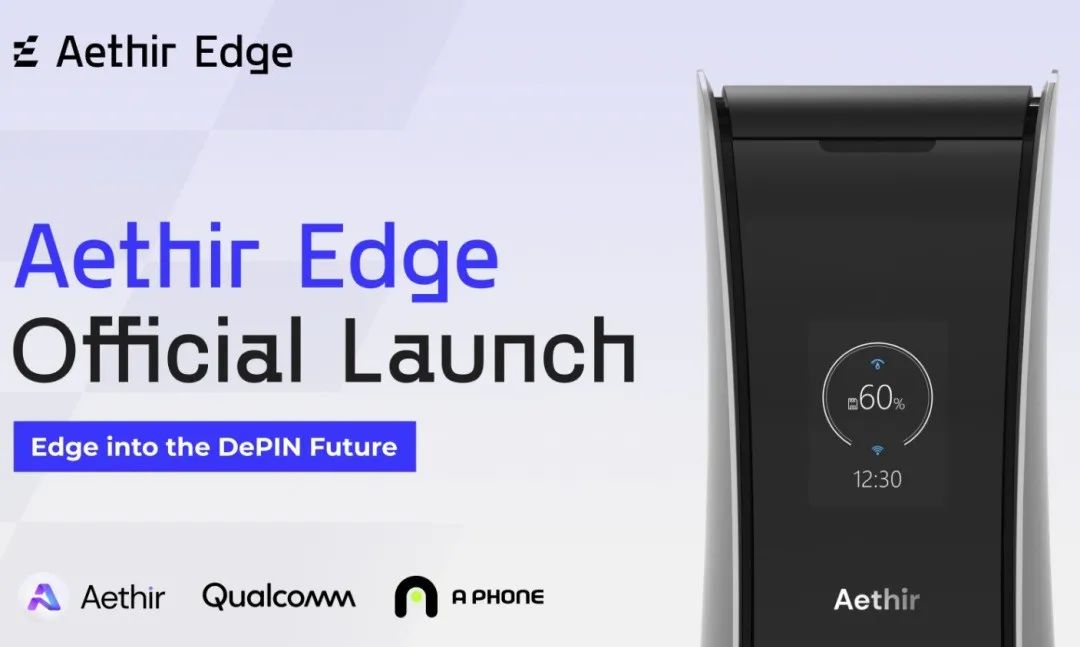
With Aethir Edge, every user can participate in the Aethir network as a computing power provider and receive token rewards without needing a professional graphics card. Users can connect it to the network via wireless or wired connections. Once connected, Aethir Edge can be managed through a dedicated mobile application, allowing users to optimize device performance and set it for specific tasks, such as GPU computing.
With this device, users can fully utilize their device's bandwidth, IP address, or GPU computing resources. Unlike the high threshold of professional mining machines, Aethir Edge lowers the barrier for people to provide computing resources, allowing everyone to purchase one and profit from their underutilized computing power.
Additionally, the portability and flexibility of Aethir Edge enable it to be distributed across a wide geographical area, allowing Aethir's GPU cloud to cover a broader range than traditional clouds, significantly reducing network latency and enabling users in remote areas to enjoy the convenience of cloud computing.


Aethir's core team has a diverse background. The founder of Aethir is an experienced manager with a successful track record in AI, cloud computing, Web3, and the gaming industry. The team's main members include former Web3 professionals, traditional financial investment professionals, and technical personnel from traditional tech companies. It can be inferred that the team has good connections and resource integration capabilities in both the Web2 and Web3 fields.
- Mark Rydon: Co-founder and CEO, previously held key positions at NOTA Platform, Flux Capital, Gaas LTD, Kulture Athletics, Inc., and Bechtel Corporation.
- Daniel Wang: Co-founder and CBO, previously served as IVC (Venture Partner), YGG SEA (CIO), Riot Games (International Publishing Director), and Riot Games China (Operations Director).
- Kyle Okamoto: CTO, previously served as CEO and General Manager of Ericsson IoT, Automotive, and Security Business, CEO of Edge Gravity, and Chief Network Officer of Verizon Media.

- Seed round (token round, early 2022): Valuation of $60 million, undisclosed financing amount.
- Pre-A round (token round, early 2023): Raised $9 million, valuation of $150 million.
The second round of investment was led by Hashkey Capital, with other participating investors including Mirana Ventures, Animoca Brands, Maelstrom Capital, Sanctor Capital, Merit Circle, Big Brain Holdings, Builder Capital, Momentum 6, Tess Ventures, CitizenX Crypto Ventures, and Lapin Digital.
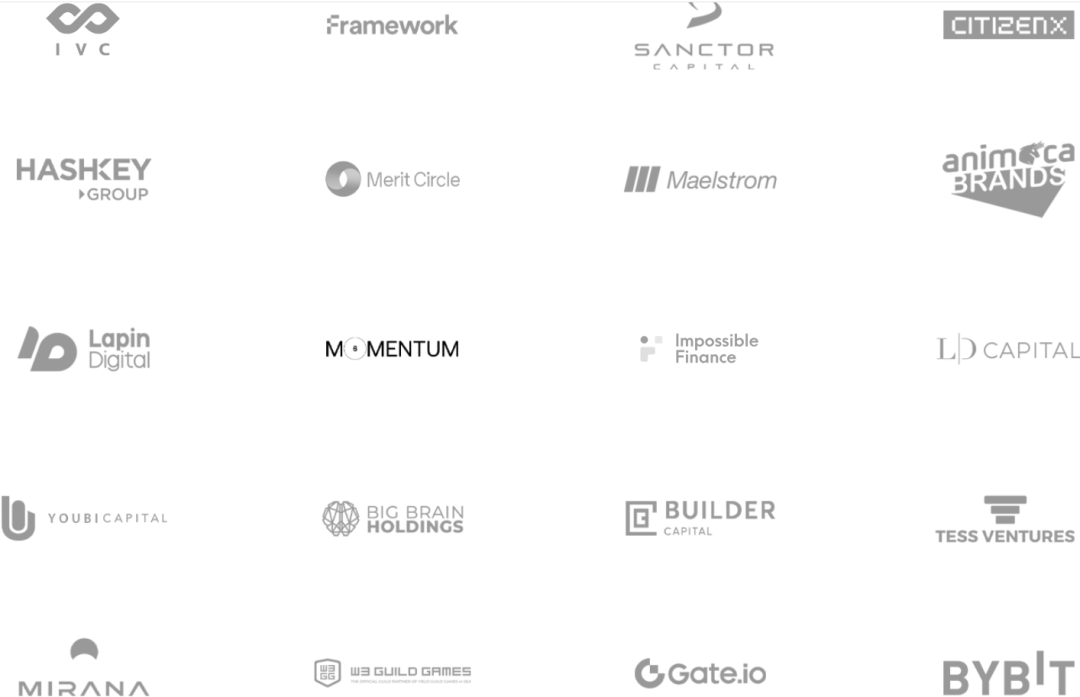


There are five categories of participants in the Aethir network: miners, developers, users, token holders, and Aethir DAO.
Among the miners, there are three types:
- Container: Provides remote rendering services.
- Checker: Evaluates the performance and service quality of containers.
- Indexer: Matches suitable containers for users.
Users: Use Aethir Edge to provide idle GPU computing power.
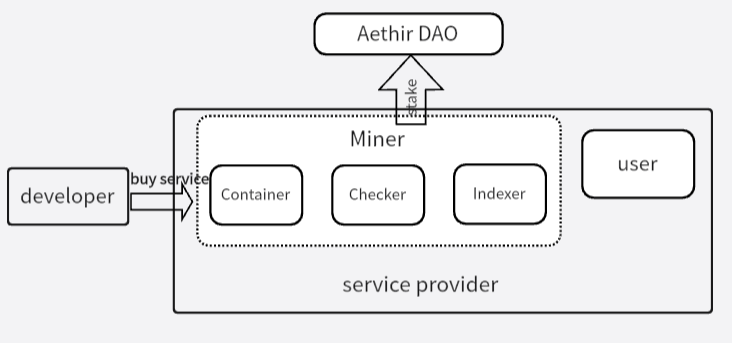

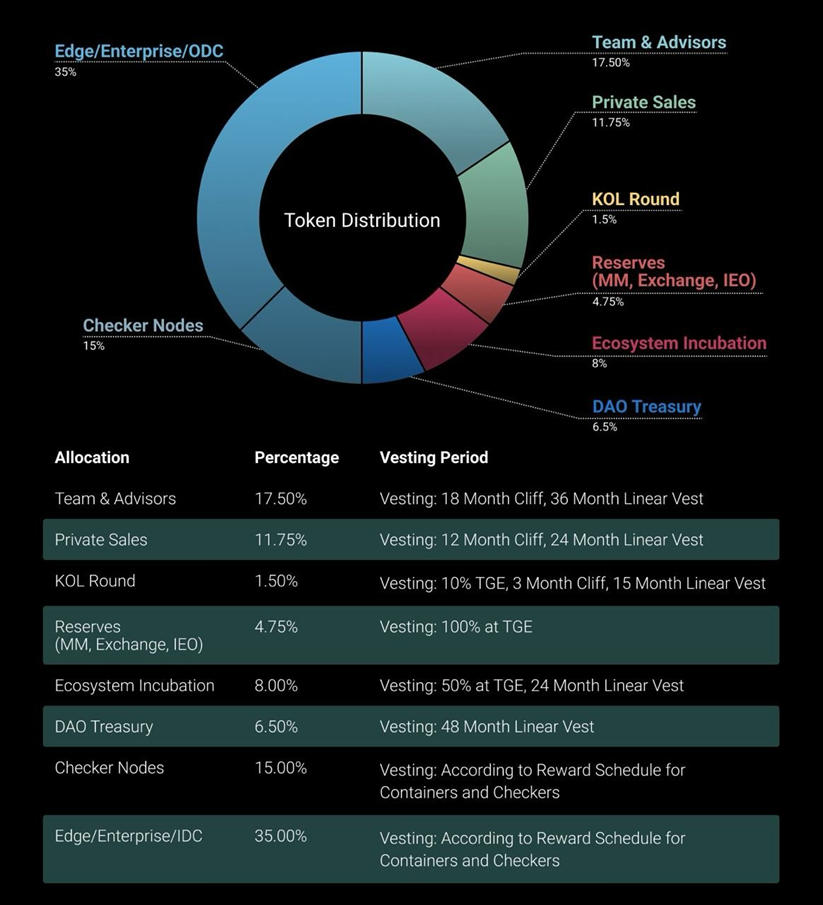
The ecosystem token is $ATH, with a total token supply of 42 billion.
50% of the tokens are allocated to miners: i.e., computing power providers and checker nodes.
Of this, 35% is allocated to computing power providers:
Edge/Enterprise/IDC: Idle GPU computing power and high-performance GPU computing power provided by professional institutions. 23% of the tokens are allocated to Edge, and the remaining 12% are allocated to Enterprise and IDC.
15% of the tokens are allocated to checker nodes, with 10% allocated over a four-year period and the remaining 5% used for checker node performance incentives. Private placement and team member tokens are subject to a lock-up period of one year or more.
$ATH has three main uses:
Transactional use: Purchasing computing power and compensating miners for their services. As the Aethir ecosystem continues to develop, merged mining and integrated markets will be introduced into the Aethir network, and $ATH will continue to serve as a medium of exchange in various applications.
Governance use: $ATH token holders have the right to propose governance opinions in the DAO, and participate in discussions and voting.
Staking: Node operators need to stake $ATH tokens to ensure their security and reliability. If a node behaves maliciously, the tokens may be partially or fully slashed. Additionally, containers can earn more tokens through staking, with more staked tokens leading to better container performance and higher token rewards.
At the same time, rewards are distributed in stages, depending on the workload and performance of the containers. For invalid computations by the above nodes, the system will deduct a portion of the rewards and handle the rewards in three parts: 10% will be burned, 25% will be reallocated to eligible nodes, and the remaining 75% will be allocated to the DAO for future redistribution.


Miners need to purchase Aethir Checker licenses to become Checker nodes. Node sales adopt a pyramid-shaped tiered pricing structure, with a starting price of 0.1259wETH and a total of 100,000 nodes. Node sales are conducted through whitelist and public sales, with lower-level nodes priced lower and corresponding quantities limited. As lower-priced nodes are sold out, buyers can only purchase higher-priced nodes. Node sales have already exceeded $80 million.
To encourage node buyers to promote node sales, the Aethir project has implemented a commission system. Buyers using a referral code for node sales will receive a 10% or 5% purchase rebate, and the provider of the referral code will receive a 10% or 5% rebate. Based on the results of purchases, the provider of the referral code receives a substantial rebate, incentivizing node buyers to promote the project to more people, achieving both breaking through barriers and increasing sales revenue.
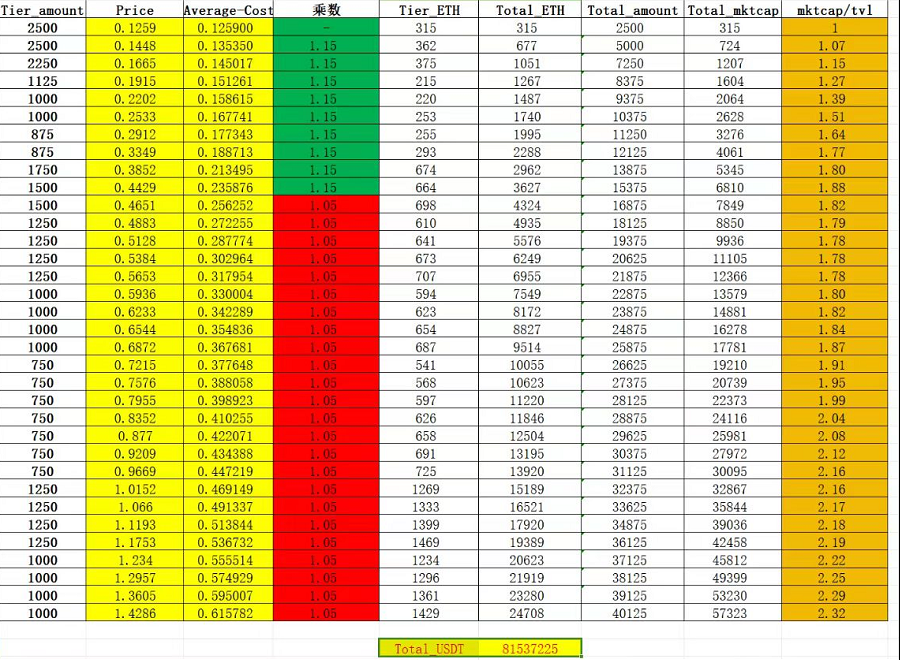
source:https://www.aethir.com/checkersaleinfo
Upon successful purchase, buyers will receive an NFT representing a permanent license for the Checker Node. NFT owners can run the node themselves or host it to earn mining rewards. Node NFTs can be valued in a manner similar to perpetual bonds. The theoretical total value of NFTs on the market is equal to 15% of the total market value of ATH, while simplifying the process of fund discounting. That is:

If the token price is too high and the NFT price is too low, i.e., the left side is less than the right side, the demand for NFTs will increase. If the token price is too low, causing the left side to be greater than the right side, it will lead to an increase in the supply of NFTs until the price returns to equilibrium. At the same time, NFTs are non-transferable within the first year of node sales, ensuring the continuous stability of checker nodes in the network. However, the price of NFTs will have a certain impact on the price of $ATH.
Due to the pyramid-style tiered pricing model of node NFT sales, it is determined that players holding low-cost NFTs at the beginning will have access to lower-cost chips, meaning their breakeven period will be shorter and their motivation to hold tokens will be weaker compared to players with longer breakeven periods, resulting in heavier selling pressure.
To address this issue, Aethir has designed the $vATH program to alleviate selling pressure. First, Checker nodes earn rewards through mining, with 10% of the total token supply allocated to checker nodes over a 4-year period, and an additional 5% of tokens used to provide bonuses to eligible nodes. Secondly, these rewards are distributed in the form of $vATH. When checkers claim their token rewards, these tokens will have a lock-up period of 30 or 120 days based on different conditions. After the lock-up period, $vATH will convert to $ATH and can be sold.
If $vATH holders want to withdraw tokens early and skip the lock-up period, 75% of the converted tokens will be subject to a penalty and they will lose eligibility for bonuses. After 120 days, the default lock-up period will be extended to 180 days, meaning the time for checkers to claim token rewards will be extended, effectively alleviating selling pressure.
Aethir Edge is a hardware component of the Aethir Depin stack. Through Aethir Edge, ordinary users can provide their underutilized computing power, bandwidth, and other resources to the Aethir network and receive token rewards, accounting for 23% of the total $ATH supply. The official sales price of Aethir Edge has not been disclosed.
It can be speculated that the token rewards obtained through Edge mining may have a lock-up period similar to that of checker nodes, and due to the difficulty of transferring Edge, the cost of user exit is higher, so the lock-up period for their token rewards may be shorter, thereby incentivizing more users to participate.
In summary, selling checker nodes and Edge mining machines is one of the important means for the project to generate profits. With the sale of checker nodes already completed, selling more mining machines has become an important goal of the project's operations at the current stage. Increasing mining expected returns is an important means to achieve this. At the time of the $ATH token issuance, only about 5% of the circulating chips were available in the market. The project has the incentive to actively boost the token price, thereby increasing the project's popularity and annualized returns, attracting more users to participate in the construction of the Aethir ecosystem.
Next, let's review and compare the valuations and financing amounts of other projects in the same track.
- io.net: io.net is a decentralized computing network aiming to combine 1 million GPUs to form the world's largest GPU cluster and DePIN infrastructure. It encompasses cloud computing, AI, and DePIN concepts, with a token set to be launched. It raised $30 million in Series A financing at a valuation of $1 billion, with investments from notable institutions such as Hack VC and OKX Ventures.
- Render: Render is the flagship product of Wynd Network, allowing users to profit from selling unused network resources through internet connections. It falls under the cloud computing and AI track, with a total of $4.5 million raised in two rounds of financing.
- Render Network: RNDR is a decentralized GPU-based rendering solution provider that connects users executing rendering jobs with users owning idle GPUs through a rendering network. It belongs to the cloud computing and AI track, with a financing of $30 million and a circulating market value of $3.5 billion.
- Akash: Akash Network is a distributed peer-to-peer marketplace for cloud computing, primarily utilizing idle CPU power for rent. It belongs to the cloud computing track, with a circulating market value of $1.25 billion.
- Gensyn: Gensyn is a distributed computing network for training AI models. It falls under the cloud computing and AI track, with a total financing of $49.5 million, led by a16z.
- GAIMIN: GAIMIN has created a decentralized data processing network, monetizing the computing power of gaming PCs. It falls under the cloud computing and gaming track, with a FDV of $900 million.
- Hive: Hive is a distributed data storage and computing platform, allowing users to rent their computing resources and perform localized storage and processing. It belongs to the cloud computing and infrastructure track, with a total financing of $20 million.
- Meson Network: Meson Network is the data transmission foundation for decentralized storage, computing, and emerging Web3 DApp ecosystems. It integrates and monetizes idle bandwidth from long-tail users at low cost, falling under the infrastructure and cloud computing track, with a valuation of $1 billion and undisclosed financing amount, with investments from notable venture capital firms such as OKX Ventures.
- Flux: Flux is a decentralized Web3 cloud infrastructure composed of user-operated, scalable, and globally distributed computing nodes. It falls under the infrastructure and cloud computing track, with a current circulating market value of $340 million.
- Aleph.im: Aleph.im is a decentralized cloud computing platform providing on-demand serverless computing, database, and storage infrastructure for decentralized application and protocol development. It falls under the cloud computing and infrastructure track, with a financing of $10 million and a FDV of $180 million.
- FormAI: FormAI is creating a decentralized and distributed computing network primarily for training and inference of AI models, falling under the cloud computing, DePin, and AI track, with unknown financing and valuation information.
Here, we will select io.net, Render, Akash, and Gensyn, four cloud computing track projects with investment lineups and valuation strength comparable to Aethir, for detailed comparison and introduction.
io.net
io.net's decentralized application is built on Solana and primarily focuses on consumer and enterprise AI/ML. As of the completion of this article, io.net has a total of 648,043 GPUs and 94,750 CPUs. Among them, there are a total of 44,398 H100 and A100 GPUs, 21,777 A100-SXM4-80GB GPUs, 18,409 A100 80GB PCIe GPUs, and 320 A100 PCIe 80GB K8S GPUs, with the latter having the highest utilization rate. At the time of the author's research (4/24/2024), the utilization rate reached 94%; there are also 30 H100 80G PCIe K8S GPUs.


Render Network primarily focuses on rendering services, with a total of 23,651 GPUs and 1,006 CPUs in the network. There are 141 H100 PCIe GPUs and 2 H100 80GB HBM3 GPUs.
Akash
Akash has a total of 21,500 CPUs and 374 GPUs, including 149 different models of H100 and A100 graphics cards.
Gensyn
Gensyn aims to gather idle computing resources from around the world to achieve low-cost and large-scale programmatic machine learning training. Its network is currently in Devnet mode, and there are no publicly available statistics on its network scale.
io.net has a leading advantage in the number of connected GPUs. In comparison, Aethir has a total of 41,756 GPUs, including 3,000 H100 GPUs, with 440 online H100 GPUs. Its enterprise-level high-performance graphics card quantity is more advantageous compared to RNDR, Akash, and Gensyn.
At the same time, Aethir can provide the most favorable A100 device rental rate at a cost of $0.33 per hour. This price has a clear competitive advantage compared to both Web2 giants and Web3 competitors.

Source: Messari, io.net, Akash Network, Aethir Network

"Whoever controls computing power, controls the world." In the AI era, we do not want computing power to be monopolized by a few, like rare diamonds. Therefore, people have chosen decentralized cloud computing to reshape the productivity and production relations in this revolution in a blockchain manner.
Aethir, as a powerhouse with a threefold core narrative of AI+DEPIN+GAMEFI, has achieved many outstanding results even before the token is launched. Its strong team strength and resource background destined this project to have just set sail, and it will surely achieve amazing results in the end.
The launch of Aethir Edge has broken the bottleneck of high-latency edge computing, allowing everyone to contribute computing power and everyone to obtain computing power. Aethir Cloud, thanks to the convenience of Edge, can be deployed to every corner of the world.
At present, this computing power revolution has just begun. Aethir will stand out among many projects by bridging the gap between high-performance computing demand and Web3 AI technology. I believe that after its token is launched, its performance will definitely become a dazzling new star in the market!
References
[1] https://research.mintventures.fund/2024/04/08/a-new-solana-based-ai-depin-project-a-brief-analysis-of-upcoming-tokenlaunch-io-net/
[2] https://docs.aethir.com/
[3] https://www.chaincatcher.com/article/2116027
免责声明:本文章仅代表作者个人观点,不代表本平台的立场和观点。本文章仅供信息分享,不构成对任何人的任何投资建议。用户与作者之间的任何争议,与本平台无关。如网页中刊载的文章或图片涉及侵权,请提供相关的权利证明和身份证明发送邮件到support@aicoin.com,本平台相关工作人员将会进行核查。




